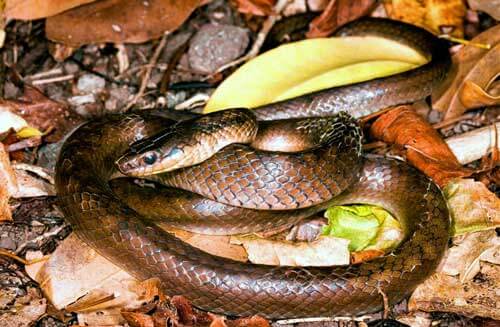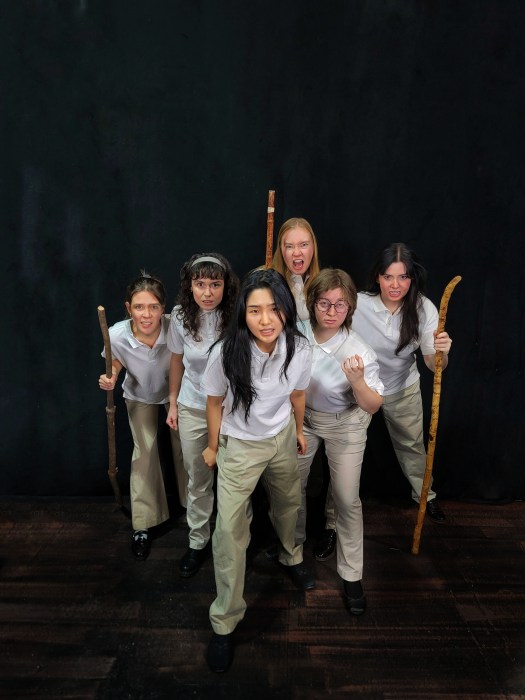SAN JUAN, Puerto Rico (AP) – A snake that scientists had declared extinct long ago has been found living in a nature reserve on a tiny isle just off the east Caribbean island of St. Lucia, conservationists said Tuesday.
At least 11 St. Lucia Racer snakes were spotted and tagged by a group of international scientists hunting for the snake in the Maria Islands reserve, which is part of St. Lucia and located about one kilometer (0.6 miles) south of the main island, according to the British-based Durrell Wildlife Conservation Trust.
Overall, scientists estimate that 18 snakes live on the reserve, said Matthew Morton, Durrell’s Eastern Caribbean program manager.
“In one sense it is a very worrying situation, with such a small population restricted to a single, tiny site,” he said. “But in another sense, it’s an opportunity … It means that we still have a chance to save this species.”
The non-venomous brown snake was declared extinct in 1936, but somebody later spotted one on the rocky reserve in 1973 and rare sightings have since been reported. Late last year, Durrell, with help from the U.S. Fish and Wildlife Service and other groups, launched a search for the snake on the larger of the two Maria Islands.
A team of six scientists and several volunteers spent five months scouring the rocky outcrop where they found some snakes slithering around during the day, looking for lizards and frogs to eat. Once they captured the snakes, they implanted microchips that will transmit data for at least 10 years, including information about their lifespan and other unknown details, Morton said.
Scientists also collected DNA samples, but the results on whether the snakes are genetically diverse won’t be known for several months. Diversity is important because it would allow for a more successful breeding program, scientists say.
There’s currently a lot of in-breeding on the 12-hectare (30-acre) islet where the snakes live, but scientists did not spot many deformities, which is encouraging, Morton said.
Brian Crother, a U.S.-based expert on Caribbean snakes who was not involved in the project, said he was excited about the finding.
“It provides us with another opportunity to preserve a piece of biodiversity that we thought we had lost forever,” he said.
As a result of the scientists’ findings, Durrell called the St. Lucia racer the world’s rarest snake, but Crother and other scientists disputed the claim.
“I think saying ‘rarest’ is a good way to bring attention to a desperate situation, but whether it really is the rarest, I don’t think you can say for sure,” said Crother, interim biology department director at Southeastern Louisiana University.
Scientists are now trying to figure out the best way to save the snake, which is less than three feet (one meter) long and is known for being gentle and comfortable with human beings.
Morton said moving some snakes to St. Lucia’s main island isn’t an option because the mongoose, its biggest predator, lives there and will destroy the population. He said breeding the reptiles on other offshore islands is a possibility, but scientists have to determine whether there’s an adequate food supply.
Frank Burbrink, a biology professor at the College of Staten Island who was not involved in the project, said the snakes should be bred in another place to ensure their future.
“You don’t want to put your eggs in one very, very, very small basket,” he said.
Morton said the trick is to ensure that people are aware of the snake’s plight so they can help with their conservation.
But he acknowledged that could be difficult, noting: “These aren’t whales or fluffy little animals that people like.”



























